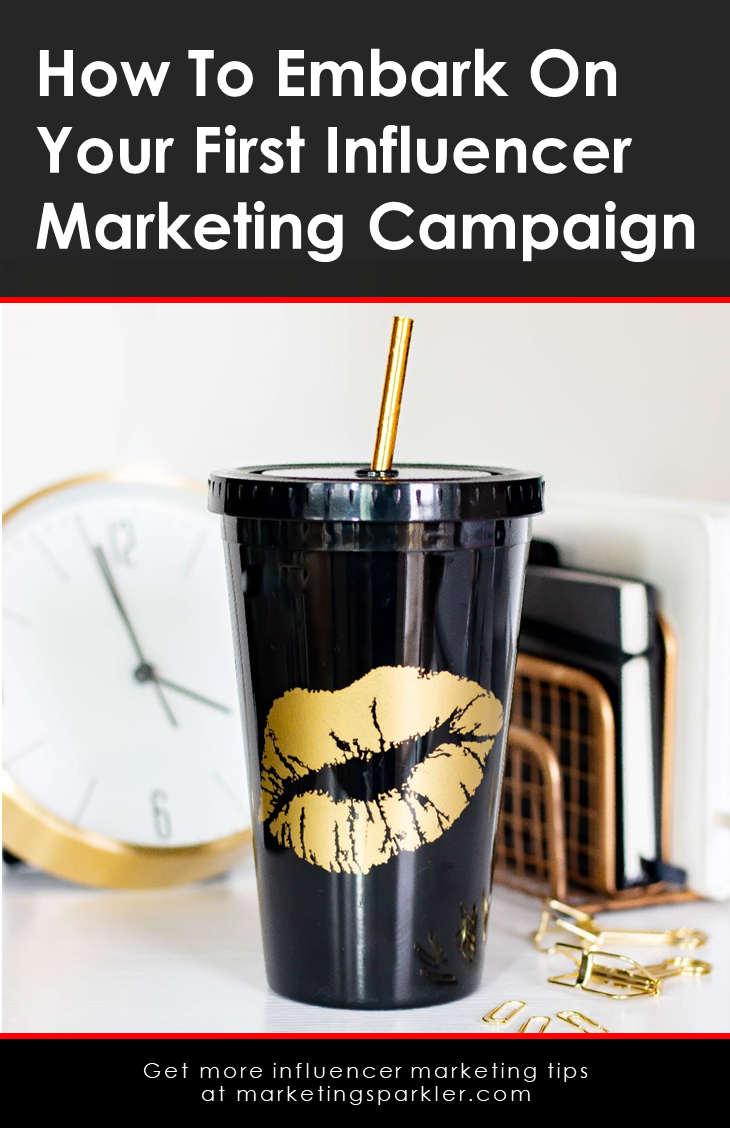We’ve been swayed by influencer marketing well before the age of social media. For example, when celebrities promoted brands in tv commercials and print ads, they were called endorsements. These endorsements were simply influencers (the celebrity) marketing products and services.
This is the evolution of what we now consider “influencer marketing”. The playing field now includes the internet, the number of players has expanded, but the game remains the same. There has never been a better, or more affordable time, for you to hire influencers to help market your products and services.
Why use influencer marketing?
Influencer marketing is a specific kind of marketing that focuses on collaborating with influential niche authorities to deliver your brand’s message to your target audience. Rather than using a widespread approach with a single message, you can instead work with influencers to spread the word for you in their own voice, with their unique content, to their already captive audience.
The great thing about influencers who create their own content is that they put their own unique spin on the content. From capturing the images to writing about the product they are promoting, these content creators add a level of authenticity to their marketing that is uniquely their own. This uniqueness can be invaluable, particularly when you a brand needs to hit the pause button on new content creation. Influencer content can be created and delivered quickly, which in turn provides brands with content that can be repurposed for different campaigns. This is in stark contrast to full branded photo shoots, which often take layers of planning to execute.
Influencer marketing often works in tandem with social-media marketing and content marketing efforts. Most influencer campaigns have some sort of social-media component, whereby influencers are expected to spread the word through their personal social channels. Many influencer campaigns also carry a content element in which either the brand creates content for the influencers to post, or they create the content themselves.
How does influencer marketing work?
Influencer marketing allows you to leverage another brand’s influence, authority, and audience to get more eyes on your products and services. It could be that you have a small audience and you need to grow your visibility in the marketplace. Or perhaps you would like to expand your reach beyond your existing customer base, and an influencer has the eyes and ears of the very audience you’re looking for. I like to call it a numbers and niche game. There are many ways to accomplish this.
The challenge is that many businesses equate influencer marketing exclusively with Instagram – this is not the case!
Influencer marketing can be used across all digital platforms, including your blog.
Examples of influencer marketing campaigns may include:
-
- Book promotion, where an influencer will read a book (or a portion of it) and write a blog post review of the book.
- Getting more reviews for a new physical product sold on a website.
- Sponsored content, by which an influencer wears/uses a product and posts on social media about it, tagging the brand in the post.
- Unboxing video of a new (physical) product received in the mail.
- Giveaway campaign, where brands offer a free product or service for the influencer to give away to their followers.
These are just a few examples to show the variety of influencer campaigns you can create. Most often people think of beauty products or fashion when it comes to influencer marketing, but the opportunities extend far beyond beauty and fashion! Most physical products can be promoted through influencer marketing, it simply takes finding the right influencer and audience.
Where are the influencers?
Just as there are A-list celebrities and D-list celebrities, there are different level of influencers. These levels are based on numbers of fans/followers AND engagement levels. After all, a person can have hundreds of thousands of followers on a social media profile and not be able to sell a single thing. Case in point: the story of the Instagram “influencer” with 2.6M followers who couldn’t sell 36 tshirts.
When it comes to determining the level of influence a person has, it’s a numbers game. For example, mega-influencers will typically have millions of followers on Instagram, and are often times a celebrity, actor, musician or athlete. You can drill all the way down to micro-influencers with 20,000 IG followers and nano-influencers with 5000 followers.
The trick to choosing an influencer to pitch is to figure out if their audience is (or would be) the right audience for what you have to offer, and if their fees are within your budget. For example, if you’re a major sports drink brand with a big budget, then you’d try to pitch a mega influencer who is an athlete. It wouldn’t make sense to try to pitch a nano-influencer who’s a mommy blogger. The audience and reach just wouldn’t make sense.
With this said, people can be influencers on different platforms and in different niches. For example, the most popular platform where people use the term influencer is Instagram. However, there are Twitter users who are influencers, podcasters with huge loyal followings, and bloggers who command the title of influencer as well. So you can guess my next statement: you do not have to rely exclusively on Instagram for influencer marketing campaigns. There are influencers all across these interwebs you can pitch for your marketing campaigns.
Set Goals
As with any marketing campaign, it is important to set goals and metrics for your influencer marketing campaign. At first glance, one might assume the goal is to get the influencer to post on social media and sell your products. However, “posting” on social media can mean anything these days.
For example, let’s name our influencer Caroline. You can’t simply hire Caroline to post about your product on social media and expect positive results. There’s more to the process.
You’d need to provide her with a set of parameters to work with: brand guidelines, figure out which platform she’s going to post on, the type of content she’ll create, etc.
In addition, you might want to review her creative content before she publishes it, and you might want to schedule another marketing effort to coincide with her posting date.
At the very least you would want to know when she’s publishing her content on social media so you can be ready for the additional website traffic, DMs, questions about inventory, sales, etc.
Are you sending Caroline the product directly, or are you giving her a coupon code to order it and go through your sales process?
Is there a specific link you’d like Caroline to include in her posts so that you can track the clicks?
As you can see, there is more to consider when putting together an influencer marketing campaign than first meet the eye. When working in the current climate, you want to be sure your marketing is sensitive to the emotional state of your consumers. The last thing you want today is tone-deaf messaging. There is a process you will want to create and use in order to maximize the ROI for your campaign. So how do we get started?
Make a Plan to Connect
1. Before contacting an influencer for a collaboration, you want to first make a plan.
-
- Why are you interested in connecting with an influencer?
- Which influencers are reaching your desired audience, showcasing your values, and speaking your language?
- What will you offer said influencer: products. services, monetary compensation, discounts, etc?
- Are there specific deliverables you are looking for?
- What ROI are you looking for?
2. Find the influencer.
You can perform your own research on social media platforms to find influencers that fit the profile you’ve laid out. There are many platforms that are specifically designed to help you find the right influencer to reach your target audience. For example, a platform like Intellifluence can connect you with activities influencers who want to promote your games and activities.
3. Make the connection.
Once you decide who your ideal influencer is, you can reach them in any number of ways:
-
- approach that person on your own,
- use an influencer platform to make a direct connection, or
- have a representative of your brand make the introductions and negotiate on your behalf.
If you encounter rejection or resistance, don’t be too discouraged. If the influencer ultimately declines, then it’s time to move on and find the perfect person for your campaign.
Measure and Repeat
Once you have decided on the type of campaign you want to execute, be sure to build in KPIs to measure the success of your campaign. For example, if you have a goal of driving traffic to a specific blog post, be sure to provide trackable links for the blog post to the influencer. You want to be able to measure the clicks!
If you host a giveaway campaign, create a special landing page for people to optin to the giveaway so that you can count the number of entries received as a result of the giveaway.
Even something like sponsored content can be measured. For example, when an Instagram influencer posts about your product, you should see corresponding traffic to your Instagram profile. You may also see an increase in the clicks to your website. Depending on the level of engagement the influencer receives, this may last for 1 day or a week.
You don’t want to wait until you have hired the influencer to create your KPIs. These should be defined as part of your marketing campaign. Having your goals and KPIs identified will actually help you to choose the right collaborators for your project, as you’ll be able to estimate whether or not they can deliver the metrics you’re looking for.
Final Thoughts
Take your time to pinpoint influencers interested in what you have to say and sell. Keep an eye on micro influencers who are genuinely falling in love with (or at least admiring) your offerings and brand mission. Their values and personality should be aligned with your brand identity and story. That is when they will go an extra mile to promote you, often by sharing content and their opinion via major social hubs.
When done right, you’ll be able to create a powerful campaign that builds off the credibility of other’s to get your brand and products in front of the right people, in the right way.
Ciao,
Miss Kemya


